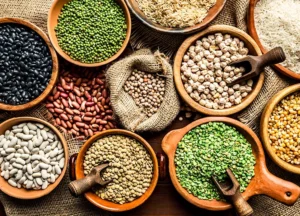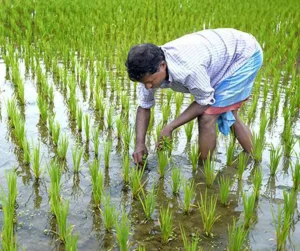Back to: Pre Vocational Studies Primary 5
Welcome to class!
Hello, my star student! It’s wonderful to have you back for another exciting lesson. Today, we’re going to learn how we can classify, or sort, crops in different ways.
Classification of Crop based on uses, life cycle, and morphology
It’s like sorting your toys: you might sort them by color, by size, or by what they are made of. We can do something similar with crops! We can classify them based on how we use them, how long they live, and what they look like. Let’s begin!
Classification Based on Use

Remember the different types of crops we talked about before, like cereals, legumes, and cash crops? That was one way of classifying crops – based on their uses.
We use cereals like rice and maize for food, legumes like beans for protein, and cash crops like cocoa for sale. So, classifying based on use tells us why we grow a particular crop. For instance, we grow oil palm to produce palm oil, which we use for cooking and other purposes. We grow cotton to make clothes. This is all about how we use the crop.
Classification Based on Life Cycle

Another way to classify crops is by their life cycle, which means how long they live. Some crops complete their life cycle in just one year. These are called annual crops. Think of maize, rice, and beans. You plant them, they grow, they produce seeds, and then they die, all within one year. It’s like a quick journey from seed to plant back to seed.
Then, there are biennial crops. These crops take two years to complete their life cycle. In the first year, they grow leaves and roots. In the second year, they produce flowers, fruits, and seeds. Carrots and onions are examples of biennial crops.
Finally, there are perennial crops. These crops live for more than two years, sometimes even for many years! They keep growing and producing crops year after year. Examples include mango trees, cocoa trees, and oil palm trees. Imagine a mango tree in your compound that gives you delicious mangoes every year – that’s a perennial crop.
Classification Based on Morphology
The third way we can classify crops is by their morphology. Morphology is a big word that simply means the study of the form and structure of plants. We classify crops based on what they look like, their physical characteristics. This can include things like whether they are herbs, shrubs, or trees.
Herbs are small, non-woody plants with soft stems. Examples include spinach, tomatoes, and peppers. They are usually quite small.
Shrubs are medium-sized woody plants with several stems branching out near the base. Examples include cocoa and coffee plants. They are bigger than herbs but smaller than trees.
Trees are large, woody plants with a single main stem called a trunk. Examples include mango trees, oil palm trees, and orange trees. They are the biggest of the three and can grow very tall.
Let’s take an example to put it all together. Let’s think about a mango tree. Based on use, we classify it as a fruit crop because we eat its fruit. Based on its life cycle, it’s a perennial crop because it lives for many years. And based on its morphology, it’s a tree because it’s a large, woody plant with a single trunk.
Summary
So, to summarize, we can classify crops in three main ways: by their use (why we grow them), by their life cycle (how long they live), and by their morphology (what they look like).
Evaluation
Now, let’s have a quick review.
- Can you name one example of an annual crop?
- Can you also tell me what a shrub is? And what do we mean by classifying crops based on their use?
Excellent work! You’re doing a remarkable job of learning these new concepts. I am so proud of your dedication to learning.
We have come to the end of this lesson.
In the next class, we shall be talking about the meaning and types of family.
In case you require further assistance or have any questions, feel free to ask in the comment section below, and trust us to respond as soon as possible. See you in the next class!
